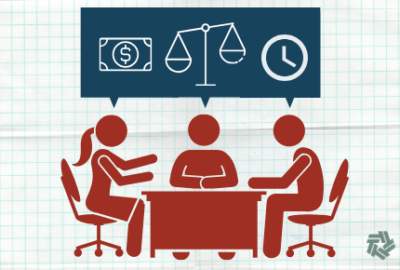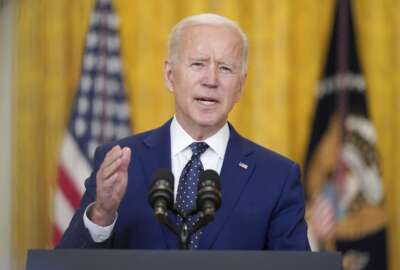
Unions: Are they good for public service?
They're here to stay regardless. It works well when everyone keeps the mission as the North Star.
Do unions belong in the federal workplace?
Given that Public Service Recognition Week is next week, and the recent changes in White House attitudes towards the federal union, I thought I’d ask that question. The atmosphere for the unions has changed a lot under the Biden administration. Yet it’s not a universally accepted given that unions are good for the public sector.
Clearly unions are in the federal workplace. They negotiate contracts for large numbers of feds — nearly a million just between the American Federation of Government Employees and the National Treasury Employees Union. Many are in public-facing jobs.
Unions as they look today mainly got their start after a Kennedy administration executive order said allowing employees to organize would be in the best interest of public administration. Since then, they’ve gotten statutory backing.
Before you think, uh oh, here comes a union bashing column, let me tell you a story:
A few years ago at a family brunch, I was chatting with a young man who’d just graduated from Yale. He’d majored in something-or-other and was working for a large labor organization.
I challenged him on a few of his “pro-worker” shibboleths. Often, recent graduates of places like Yale operate under the mistaken assumption that they know a lot. Finally — and in good humor — he told me, “Well, you’re just anti-union!” Just the moment I was hoping for. I pulled my wallet out of my back pocket and withdrew my SAG-AFTRA membership card. Sticking it in front of his nose I answered, “Where do you pay dues?”
SAG-AFTRA is an AFL-CIO union formed by the combination of the Screen Actors Guild and the American Federation of Television and Radio Artists. I like to tell people I’m in the same union as Brad Pitt, only I’ve got better looks. Half of that is true.
So, no, I’m not anti-union. I’ve been in two unions in my career as a matter of fact. Walked a picket line even. I’m no more anti-union than I am anti-corporation. Both do great good. Both have examples of terrible conduct and corruption. That’s the human condition.
Many years ago on the Metro route from Silver Spring, Maryland, to downtown D.C., you could see an old brick building that housed a union, if I recall, the International Brotherhood of Electrical Workers. Painted on the brick wall was a big sign that read, “Unions: The People Who Brought You Weekends.” Perhaps long ago, but in many ways it was indeed organized labor that established basic norms of corporate treatment of employees. Much of what unions established eventually became engraved in basic labor law.
Now the Biden administration has made several moves to restore agency relations with the various unions that represent federal employees. Official time is back. The management-union discussion panels are back. Not everything has turned to moonlight and roses, but it definitely feels more like the Clinton-Obama years than the Bush-Trump. Unions are even getting their in-agency office spaces back, although in some cases the old spaces were repurposed, and a hunt for new space ensued.
Next week on Federal Drive, I’ll air a series of interviews exploring whether unions should be in the federal world, and if so, what is their proper role. You’ll hear a range of opinions from heck-yeah to heck-no. And also from a union president.
The bottom line is that the unions can be a force for good or a drag, but on the whole they’ve done more good than harm. Having spoken over the years to a number of union presidents, both of the nationals and locals, I haven’t heard too many rabble rousers. The federal workplace is hardly the world of Walter Reuther and Henry Ford.
People I’ll be speaking to include scholar Jim Perry, who has studied public administration for decades, and the NETU president, Tony Reardon. Both say a key to success in good union-management relations in the federal sector is a focus on the mission, rather than on their own prerogatives. That’s not wild-eyed idealism, nor does it beg the hard demands line employees may have over working conditions, shifts and grievance procedures.
It’s more, having a shared point of reference keeps everyone talking about a shared goal. Then management should listen to the bargaining unit, whose members often have the best perspective on how to actually get something accomplished. The union should listen to management, which lives in a blended world of continuity and the political pendulum.
Nearly Useless Factoid
By Alazar Moges
Unlike humans that use lungs to breathe, insects breathe through a network of tiny tracheae tubes. Air passes in the tubes through holes inside of the abdomen walls called spiracles and then diffuses down the blind-ended tracheae.
Source: Arizona State University
Copyright © 2025 Federal News Network. All rights reserved. This website is not intended for users located within the European Economic Area.
Tom Temin is host of the Federal Drive and has been providing insight on federal technology and management issues for more than 30 years.
Follow @tteminWFED
Related Stories





